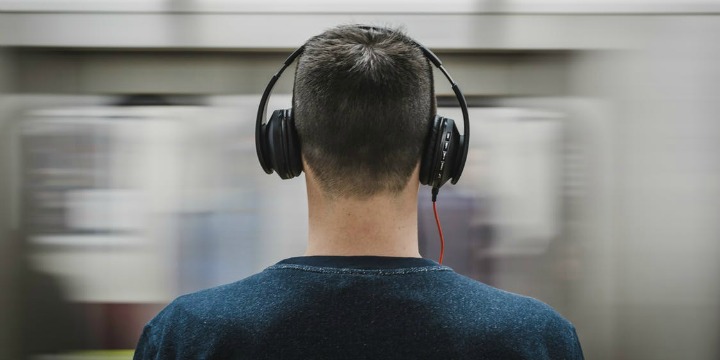How to Protect Your Ears and Avoid Noise-induced Hearing Loss

1 February 2019
One of the best things about the 21st century is that we can pretty much pump our music whenever, and however, we want. Plus many of us live a short walk to a train station, and we can build massive structures, use powerful drills and chainsaws in our own home, and even drive motorcycles.
Basically, we can now do a lot of stuff that would confuse, frighten and delight Jane Austen, which should be the primary goal for any activity. The one problem is that all of it is really loud and has the potential to damage our hearing without us even noticing until it’s too late.

Studies show that listening to sounds at 85dB(A) for eight hours a day is hazardous. At 100dB(A), you only need 15 minutes a day to damage your hearing, and at 110dB(A) it’s a minute and a half. To put that into perspective, using the NIOSH SLM sound level testing app, playing punk drums on an acoustic drum kit hit 100.2dB, a Les Mills Body Combat workout at the gym was 89dB, and a Motown cover band at a gala dinner was 104dB.
According to Siobhan McGinnity, who is a clinical audiologist writing a PhD on noise induced hearing loss in the music industry, there’s a relatively easy solution to help deal with the issue of environmental noise. If you don’t feel comfortable asking them to turn it down, take hearing protection everywhere.
“If you are standing next to someone a metre away, and you have to yell to be heard, then that is in what we call ‘the danger zone’,” McGinnity says. “If you’re going to be there a long time you [should be] using hearing protection. Because no one wants to go deaf just because they love listening. That’s ironic.” When something like a gig is that loud, there’s a good chance you’ll still hear it perfectly clearly, even with ear plugs in. For people who aren’t sure about whether ear plugs would help them, McGinnity has a simple test everyone should try: just put in one ear plug (have two though, just in case) during a gig.
“Then take the earplug out at the end of the night, and listen to how different the world sounds,” she says. “One ear will sound beautiful, crystal clear and energised, and the other ear will sound dull for hours, potentially, depending on how loud it is.”
One of the biggest culprits of hearing damage is headphones, but only out of impatience and a lack of quality.
“Research shows that we’re actually pretty good at listening to volume safely through headphones,” McGinnity says. “But the moment we step into background noise, if the headphones don’t block it out… you compete, and you turn the music up and up and up and up until you can hear it, and that’s when you do damage.”
According to McGinnity, the worst culprit for that kind of risky listening is cheap earbuds, or the ones that came with your phone, because they’re directly in your ears, don’t put out good quality sound and don’t create any kind of seal to block out the background noise. Her biggest tip for off-the-shelf headphones that are likely to do less damage are over-the-ear headphones with good noise cancelling, though it comes down to personal preference which ones are the most comfortable and block out the right amount of sound. It’s also possible to get custom tips made for in-ear headphones from an audiologist, so you get the perfect fit and the perfect seal. It certainly makes the headphones more expensive, but if you have ears that don’t conform to the standard ear tips in the box, yet prefer an in-ear solution, then they’re a great option.
For those who are concerned about their hearing, there are plenty of headphones that give you basic hearing tests using an app so it turns up frequencies you might be missing. It doesn’t replace a proper test from an audiologist, but it can give you an indication of where your hearing’s at. There are also some, like the Beyer Dynamic headphones and app, which track your usage and let you know when you’ve reached your safe limit for the day.
As well as more education about hearing loss and its causes, McGinnity says that one of the key things is reducing stigma. Because as long as hearing loss is seen as something that ‘just happens to the elderly’, younger people aren’t going to be comfortable seeking help, using protection, or getting hearing aids when they need them.
No one wants to be the lame person asking their gym instructor to turn the music down because it’s hurting their ears, or suggesting the music at the pub is turned down so conversations don’t have to be shouted directly into someone’s head. But if we all knew the risks and the harm, maybe we’d do a better job of looking after ourselves and each other.
